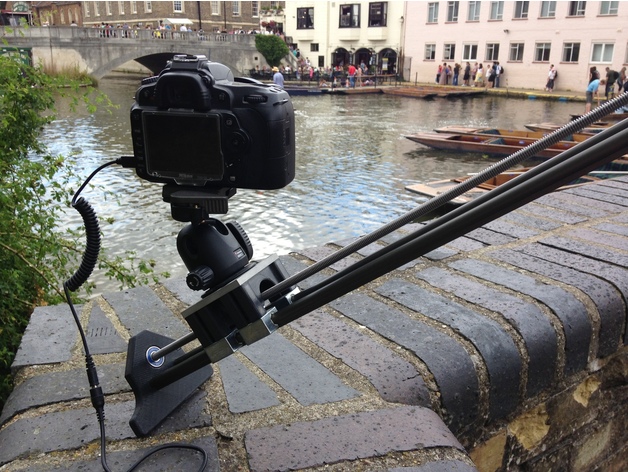
Time-Lapse Rail
thingiverse
This project is a variant of the Chronos Project, featuring an Igus WS-10-40-10 rail and carriage with polymer bearings for smooth movement. A stepper motor, lead-screw, and anti-backlash nut ensure accuracy in this time-lapse system. The lead-screw's locking mechanism makes it suitable even when oriented vertically, while a small stepper motor is all that's required to run the rail. The controller utilizes an Arduino Uno with a custom shield based on the Chronos Controller's open source schematic. An RJ45 connects the stepper motor and limit switches, working seamlessly within the compact enclosure. Features of the enclosure include bosses for 3mm threaded brass inserts to secure the Arduino Uno, a ledge for laser-cut acrylic, and a mounting feature for an RJ45 socket. The time-lapse rail uses a stepper motor to move the camera, taking approximately 3 minutes to travel from one end to another. A clamping feature allows the carriage to be released from the anti-backlash nut on the lead screw, transforming it into a manual slider with the help of a hex key. The end plates accommodate limit switches, stepper motor, and bearing connections while providing stability on flat surfaces. For sourcing parts, Ebay is recommended for items like controller components (e.g., 2.5mm stereo jack sockets, black knobs, momentary buttons, RJ45 connectors) and time-lapse rail components (e.g., Igus rails and bearings, lead screws, anti-backlash nuts, copper tape, limit switches). Sugru and various screws are also needed for assembly.
With this file you will be able to print Time-Lapse Rail with your 3D printer. Click on the button and save the file on your computer to work, edit or customize your design. You can also find more 3D designs for printers on Time-Lapse Rail.
